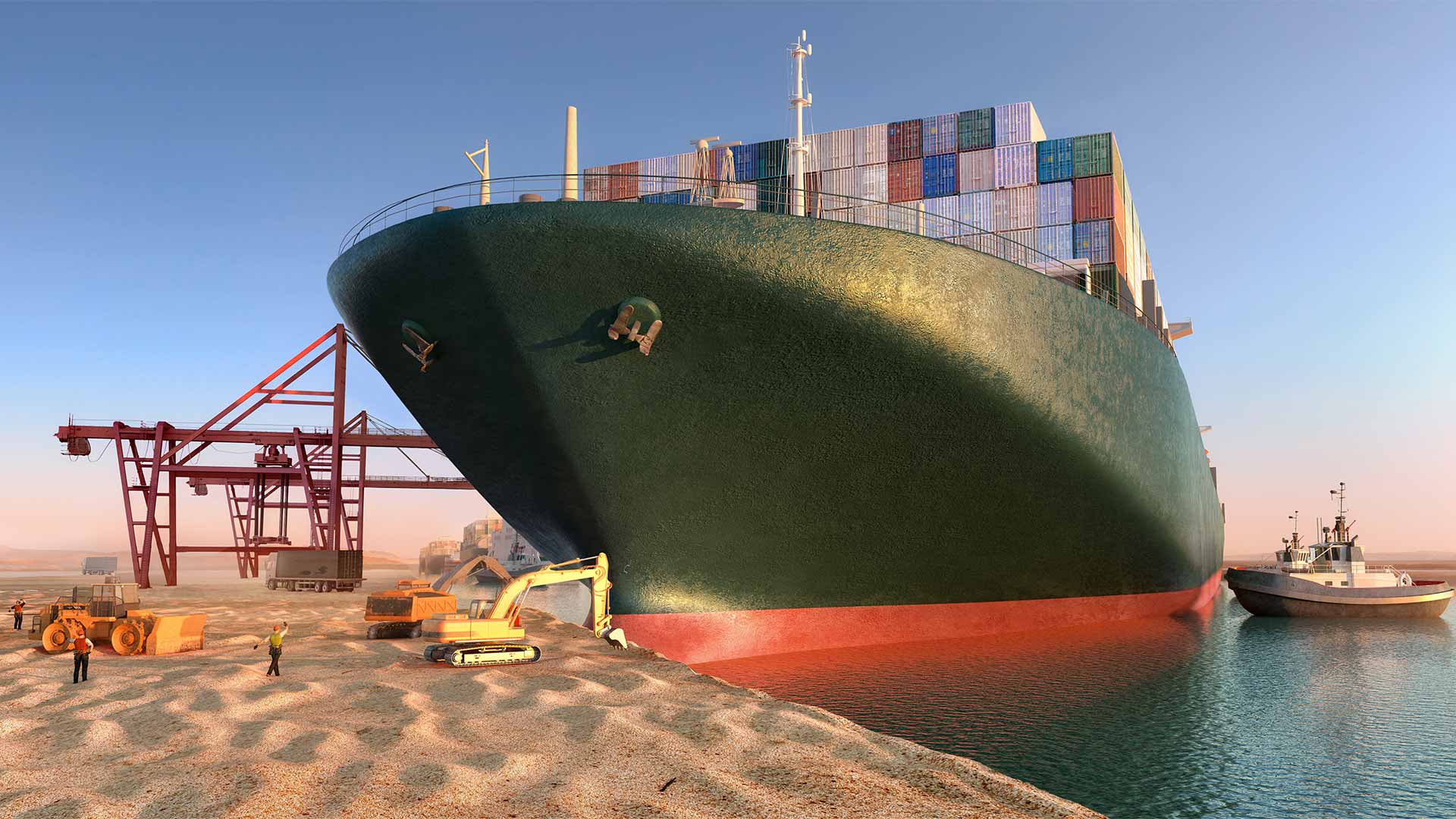In light of the recent Suez Canal blockage, how can businesses protect themselves from future unexpected disruptions to their supply chain?

Connecting the Red Sea to the Mediterranean, the Suez Canal is one of the world’s busiest shipping lanes, with 40-50 vessels passing through the canal every day. Consequently, when a 400m-long container ship recently became wedged sideways and blocked the canal for almost a week, the disruption to world trade was considerable.
As well as the goods on the grounded ship itself, which ranged from furniture to a giant model of a Tyrannosaurus Rex, numerous other ships were held up in the Mediterranean and in the canal’s holding zones, while others had to reroute around the Cape of Good Hope. Consequently, as Alexander Mutter, Head of Sales EMEA at Taulia, points out: “The stuck cargo and subsequent traffic jam held up US$9bn a day in global trade value.”
By the time the ship was finally freed by the efforts of tug boats and dredgers on the 23rd March, a considerable backlog of ships had built up. As Danish shipping giant Maersk noted at the time, “the ripple effects on global capacity and equipment” meant that the disruptions and backlogs “could take weeks, possibly months, to unravel.”
Supply chain disruptions
The Suez Canal incident may have been unprecedented. But as Mutter points out, the situation also highlights one of many potential disruptions to world trade. “This cast a light on the vulnerability and sustainability of global supply chains which can have an almost immeasurable impact on both businesses and consumers,” he says.
Disruptions to supply chains can take many different forms. During the COVID-19 crisis, factories around the world have had to close as a result of outbreaks of the virus, while the abrupt reduction in air traffic has also had an impact on the transportation of goods. In total, 94% of companies reported a disruption to their supply chains as a result of COVID-19, according to a survey by Euler Hermes.
Other types of disruption can also occur due to natural disasters – such as the earthquake and tsunami that struck Japan in 2011, resulting in a considerable knock-on effect for automotive supply chains around the world.
Seeking resilience
In today’s interconnected world, the impact of supply chain incidents can have a major impact on companies, particularly those that operate on a ‘just in time’ basis – in other words, when materials are delivered only when needed, thereby minimising inventory costs.
So how can companies protect themselves against future disruptions? As Mutter explains, “To improve and protect supply chains, all sectors are implementing new measures such as multi- versus single sourcing, near versus off-shoring, as well as digitization and automation.”
Indeed, a 2020 McKinsey survey of 60 supply chain executives found that 93% planned to increase the resilience of their supply chains. Their proposed strategies included dual sourcing of raw materials (53%), increasing inventory of critical products (47%) and near-shoring and increasing their supplier base (40%).
Financial resilience
As Mutter also points out, “Alongside physical supply chains, financial resilience is key to ensure that businesses have the liquidity to deal with disruption such as the Suez Canal blockage or the global pandemic.”
A report published last year by KPMG, COVID-19: A guide to maintaining Business Resilience, details some of the ways that businesses can achieve financial resilience, such as establishing a cash-focused culture across the business, engaging with lenders or alternative funding providers to maximise available headroom, and working with suppliers to understand their funding pressures.
As Mutter concludes, “The ultimate objective is for all counterparties to contribute and benefit, which relies on each party forecasting, monitoring, and managing risks appropriately across the entire supply chain. This requires a high degree of transparency, risk analytics, and technology to appropriately manage cash flows.”